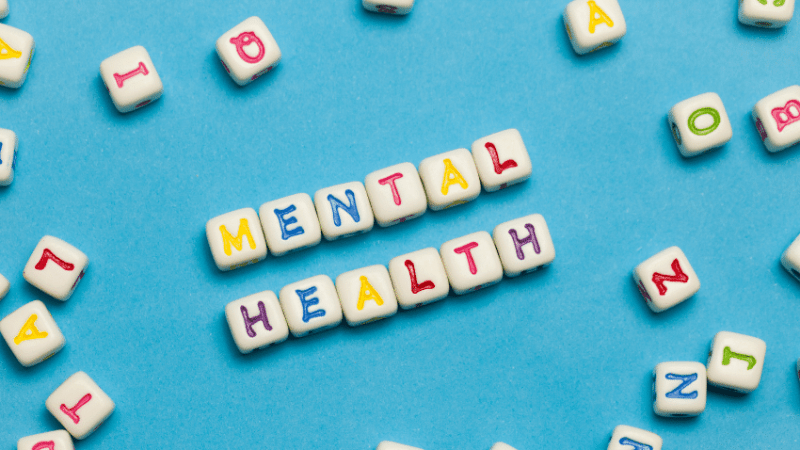LGBT History Month 2025 – Best resources for primary & secondary
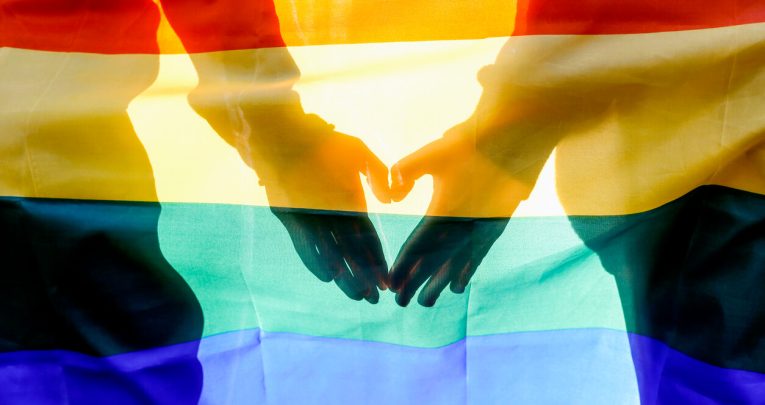
February is LGBT History Month so we’ve rounded up some great resources that you can use to educate and celebrate…

- by Teachwire
- Classroom expertise and free resources for teachers
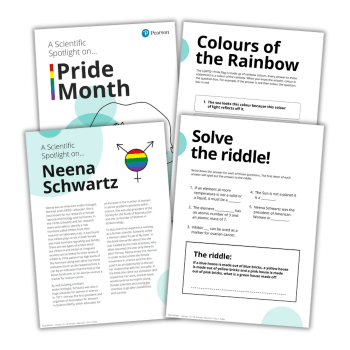
Celebrate diversity and inclusion in your school with the help of these resources for LGBT History Month 2025…
When is LGBT+ History Month?
LGBT History Month takes place every February – the month that Section 28 was abolished in 2003. 2025 marks its 20th anniversary.
What is LGBT+ History Month?
The overall aim of LGBT+ History month is to promote equality and diversity. The theme for 2025 is ‘Activism and social change’.
LGBT+ History Month resources for schools
KS2 resources
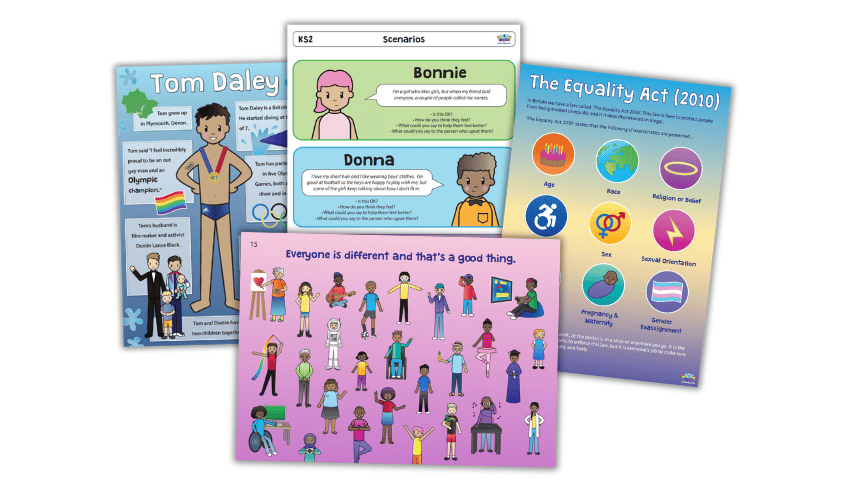
Teach about equality and diversity and combat LGBT+ prejudice before it can begin to form with these free resources from Pop’n’Olly. There’s an assembly about identity, two posters and a set of KS2 scenarios discussion cards.
LGBT scientist activity pack
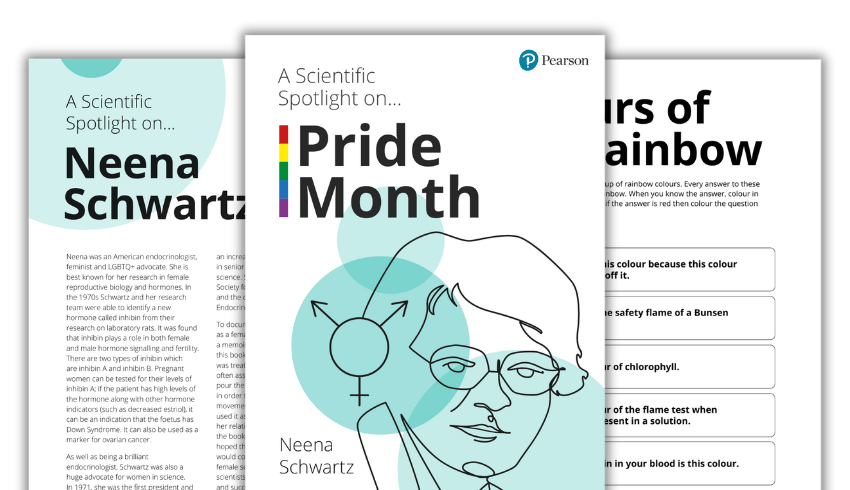
Introduce pupils to the achievements of a famous LGBT scientist with this free activity booklet. Explore key facts about Neena Schwartz – an endocrinologist, feminist and LGBTQ+ advocate.
Resource sheets

Promote shared understanding and mutual respect by helping staff get to grips with these simple, universal terms for trans and gender-questioning individuals.
Educational Action Challenging Homophobia created this glossary, which features clear definitions for 13 gender identity and sexuality terms.
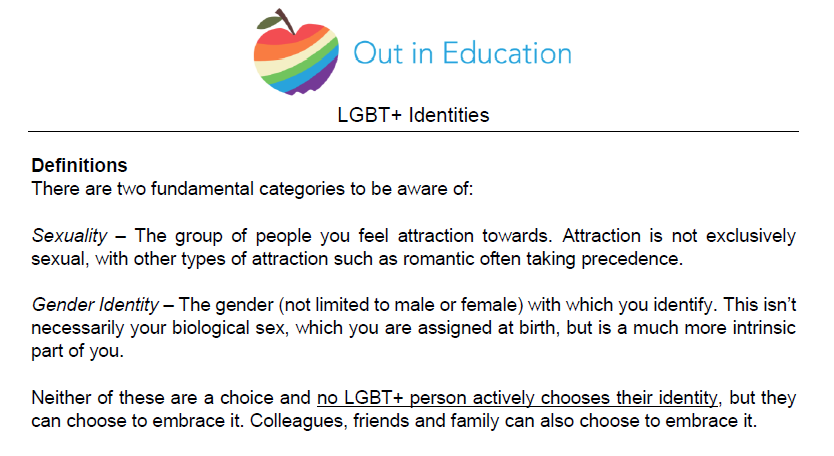
This resource sheet on LGBTQ+ identities from Out in Education provides handy definitions on sexuality and gender. It goes on to explain how these should be seen as useful guidelines or starting points. In reality, identity is more fluid and complex.
It goes on to provide a more accurate model, and talks about ‘coming out’ and the use of pronouns.
Best LGBT books

Reading material in your school library should reflect everyone’s reality. None of the books on our LGBT books list aim to indoctrinate children into the LGBTQ+ community. It’s simply about rejoicing in love in all its different forms by recognising, normalising and honouring every relationship.
Free primary LGBT+ History Month resources

LGBT+ young people’s charity Just Like Us has created free downloadable profiles of historical icons.
Suitable for KS1 and KS2, they cover a range of people, including lesbian astronaut Sally Ride, transgender pilot Roberta Cowell, bisexual singer Josephine Baker and gay artist Keith Haring.
Inclusion through play
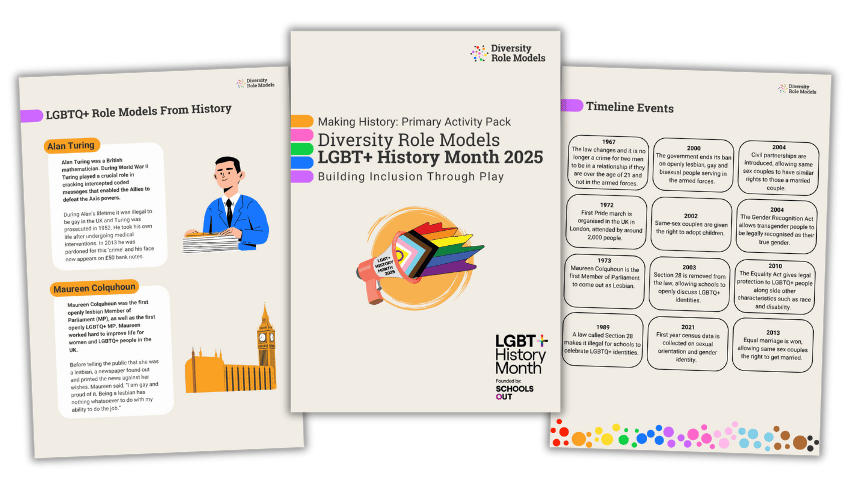
The charity Diversity Role Models has created a primary resource pack called ‘Building inclusion through play’. There are videos to watch, highlighting inspiring role models and pivotal moments from LGBT+ history.
The activities, which use LEGO bricks, can form a series of sessions and support your PSHE and RSHE curriculum.
There’s also a secondary resource for Year 9 and up called ‘Standing up through activism‘, which comes with a series of videos from inspiring role models sharing their personal stories.
British Army LGBTQ+ resources

Help secondary students aged 11–16 build their understanding of the LGBTQ+ community with these resources all about the contributions of LGBTQ+ Army personnel past and present.
LGBTQ+ Voices – The Army Today from Army Jobs on Vimeo.
In the pack you’ll find an assembly and lesson plan. The assembly profiles six LGBTQ+ service people from the First and Second World Wars. There’s also video reflections from current LGBTQ+ Army personnel.
Families KS2 discussion and writing pack

Explore how all families are founded in love, no matter what they look like, with this KS2 resource pack from Plazoom.
The activities will teach pupils that family units can vary. This includes blended and single-parent families, families where parents are the same sex or that have a mum and dad.
Pupils will draw pictures or create family trees showing who they live with and discuss images that challenge stereotypes of what a family should look like.
The Proud Trust
Happily Ever After 2017 from Action Transport Theatre on Vimeo.
The Proud Trust is a charity providing education, support and advocacy for LGBT+ young people and their communities.
In its primary education toolkit you’ll find Happily Ever After. This is a KS2 resource that explores same-gender relationships and equal marriage.
Also on offer for UKS2 is a Trans Positive Education for Primary Schools Pack. It consists of five resourced lessons that can be delivered as part of a PSHE KS2 programme.

Every year, The Proud Trust creates a resource pack for LGBT+ History Month. Browse the available packs.
The Fights That Make US
The Fights That Make Us is a book for children aged 10+ about LGBTQ+ history from award-winning author Sarah Hagger-Holt. Its dual narrative follows LGBT family members across two generations with their own struggles against Section 28 and transphobia.
LGBT-inclusive primary curriculum
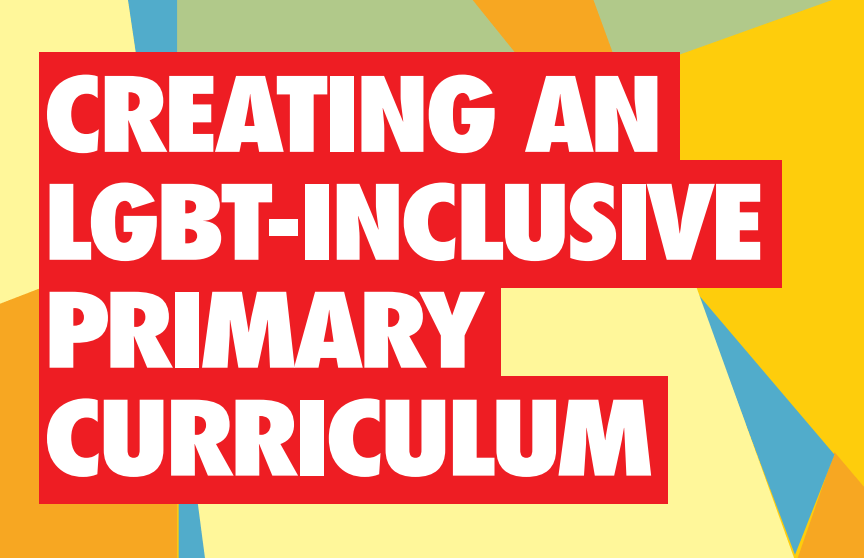
Whether you’re just getting started on LGBT+ inclusion or developing your best practice even further, this free Stonewall guide can help.
You may also find these guides for working with parents useful. These resources for framing inclusion through rights and schools with faith values are also extremely helpful.
Nicola Adams KS1 reading and writing resources pack

Introduce KS1 pupils to sportswoman Nicola Adams, using this KS1 resources pack from Plazoom. It looks at her achievements and how she is an inspirational person within and beyond the LBGTQ+ community.
Pupils will have the opportunity to develop comprehension skills using the questions linked to the biographical text about the boxer. They’ll also consider how she has inspired others.
Children will go on to discuss who inspires them, with opportunities to write about who is inspirational in their own lives.
Explore LGBT+ History Month through film
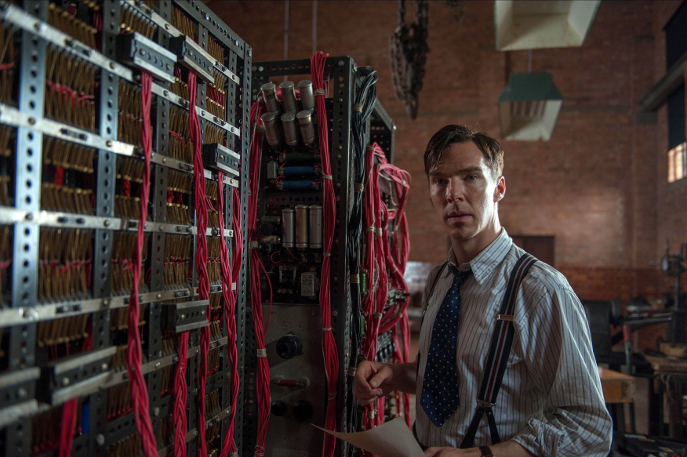
Into Film invites schools to host a themed assembly this February. Use movies like The Imitation Game, Carol and Milk as the centre of lessons on PSHE, SMSC and citizenship.
Gender identity lesson plans for primary school

The Gender Identity Research and Education Society has produced two different age-related lesson plans on gender identity for primary school. There’s one for ages 3-6, and one for 7-11.
Why schools should teach LGBT+ history
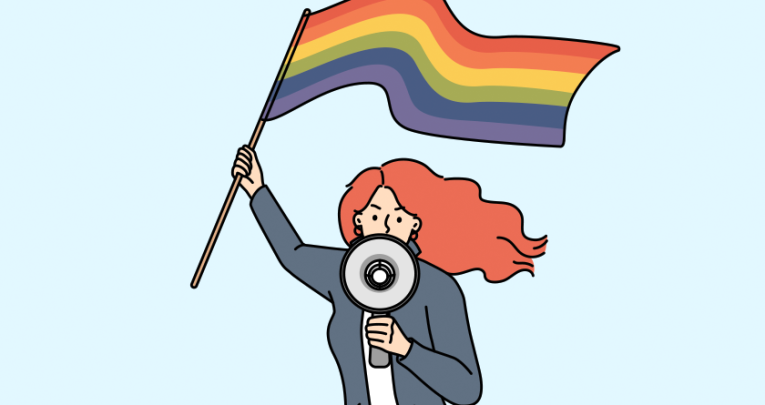
Pride reminds us how far we’ve come with respect to LGBT+ understanding and respect. So why not teach that remarkable history in school, asks Aqsa Islam…
An independent Facing History survey of 2,000 14- to 17-year-olds found that only 35% believe they’re being taught a representative version of history. Yes, Pride Month is an important celebration of marginal communities, but we should teach LGBTQ+ history all year round.
The history curriculum could teach young people about the Stonewall Riots, for example. Or you could cover the historical oppression of LGBTQ+ communities. Alternatively, you could learn about the long history of campaigning by those communities for equal rights.
You could use art lessons to study the experiences of influential LGBTQ+ artists, such as David Hockney. You could discuss the visual representation of art that engages with LGBTQ+ themes.
Maths lessons could include activities that relate to the discoveries and achievements of Alan Turing. Science lessons, meanwhile, could highlight the achievements of astronaut and physicist Sally Ride. She was the first – and thus far only – LGBTQ+ astronaut.
Powerful learning experiences
Music and literature are both subjects that can provide particularly powerful learning experiences in the context of LGBTQ+ history.
As mediums, books and music can establish direct and deep connections with audiences, in ways that can foster self-acceptance, build self-esteem and encourage greater acceptance of those who are different to us.
For schools keen to embrace LGBTQ+ history, but concerned about the implications for their workload and planning, Facing History’s free ‘LGBTQ+ History and Why It Matters’ lesson covers two millennia of LGBTQ+ history.
Facing History also has ready-to-use assemblies to mark LGBTQ+ History Month and International Day Against Homophobia, Biphobia and Transphobia.
LGBTQ+ history lessons can boost students’ sense of belonging and build empathy. Ultimately they normalise the fact that our sexual and gender identities are complex and diverse.
Aqsa Islam is programme associate at the charity Facing History and Ourselves; for more information, visit facinghistory.org
How to make every month LGBT+ History Month

View LGBT+ History Month as the jewel in your crowns, but use it to showcase the amazing work you do every day, all year round, says LGBT+ inclusion advocate, Dr Shaun Dellenty…
Back in 2009 whilst working as a primary school leader pupil, data revealed that we had a serious bullying issue related to LGBT+ identities. 75% of pupils were experiencing homophobic bullying daily.
With a duty of care for all our children I knew we could not let this go unchecked. As a survivor of homophobia, I knew well the negative impact that such bullying has on mental health, attendance and attainment. It can even potentially lead (as it very nearly did in my case) to suicide.
There was, back then, little about positive LGBT+ inclusion for primary-aged pupils. Stonewall informed me they were cautious about undertaking work in primary schools. This was due to negative reactions from parents and the press.
They (and I) were aware of the possibility that any such work might result in accusations that, somehow, we were ‘sexualising’ young people. This was purely by defining terms such as ‘lesbian’ and ‘gay’ in an age-appropriate manner and giving young people permission to use these words factually and respectfully.
My lived experience showed me that we often know exactly who we are as LGBT+ people, even as far back as infants.
LGBT+ inclusion training
My school had a specific problem, and specific problems require targeted solutions. In the absence of any existing training, I wrote a positive LGBT+ inclusion training programme.
The whole-school training was informed by my lived experiences as a gay youth. It was also informed by my classroom practice, school leadership experience and my work as a part-time schools consultant.
Initially, I used Black History Month activities as a stimulus, imagining what could happen if schools dedicated one week of the year to exploring LGBT+ issues to increase visibility and awareness.
However, as a school leader with fairly extensive experience in introducing whole-school and borough-wide initiatives, this felt too compartmentalized. It was too tokenistic.
Whilst I could see that ‘minority-themed’ school weeks supported visibility, the core aim of my training would be to effect sustainable whole-school organisational change at a strategic level, resulting in a positively LGBT+ inclusive ethos that would permeate every aspect of school life. I then wanted to reach out into the community beyond the school gates.
In this way, the overall aim of LGBT+ History Month could be a constant companion to ongoing classroom practice and whole-school strategic management.
Prejudices
I delivered the training in my own school in January 2010. At its core was recognition that every professional in every school comes to LGBT+ issues with their own history in terms of what they think, feel, believe and have been told about what LGBT+ human beings are, and perhaps more importantly, what they are not.
I felt that until we had created a safe, compassionate and non-judgmental space in which we could all work our way through our anxieties, misconceptions and yes, even in some cases, prejudices, any LGBT+ teaching and learning would be less effective and be more likely to be ‘quietly forgotten’ by pressured teachers.
This process proved highly effective. A tangible sense of empowerment and relief swept through our school as we got on with making our daily lives rich with visible LGBT+ role models.
We provided books, models and image resources in nursery to Year 6 about varied families and relationships. We studied human rights. Children learnt about the negative impact of prejudice-related bullying of all kinds. We taught the appropriate use of the word ‘gay’. It was about empowering young people to own and lead on the work.
At a management level we ensured policies, handbooks and codes of conduct were compliant as the Equality Act 2010 and Ofsted frameworks finally began to catch up with us.
Our commitment to LGBT+ inclusion became as much a part of our everyday work as any other form of inclusion. It became a source of daily visibility and celebration in the same way as non-LGBT+ identities.
Heightening visibility
Since 2009 I have trained over 21,000 education professionals in the UK. I lead training for school staff at all levels and lecture on LGBT+ inclusion in teacher training faculties. I also tell my story in many assemblies at primary and secondary.
The training programme I created won multiple awards and I was honoured with a ‘Points of Light’ designation for my work from the Prime Minister.
I am currently supporting the Isle of Man Department of Education, Sport and Culture to make the entire island education system more positively LGBT+ inclusive. This is a huge honour and privilege.
LGBT+ History Month, like Black History Month, is a fantastic way of heightening visibility and celebrating those whose histories have yet to be fully told.
These months provide important foci for raising awareness. Unfortunately, for some schools, they can also offer a ‘tickbox’ opportunity for covering LGBT+ and other minority issues.
This is an approach which fails to align with the Equality Act 2010’s requirement that we should be champions for LGBT+ equality, fostering good relations and acting as flag bearers for acceptance and compassion for differences of all kinds.
View LGBT+ History Month as the jewel in your crown, but use it to showcase the amazing work you do each and every day, all year round. Then we can really change young lives for the better.
Dr Shaun Dellenty is an award-winning educator and LGBT+ inclusion in education advocate. He is the author of Celebrating Difference: A Whole School Approach to LGBT+ Inclusion. Follow him on Twitter at @ShaunDellenty.
Why inclusive education is vital
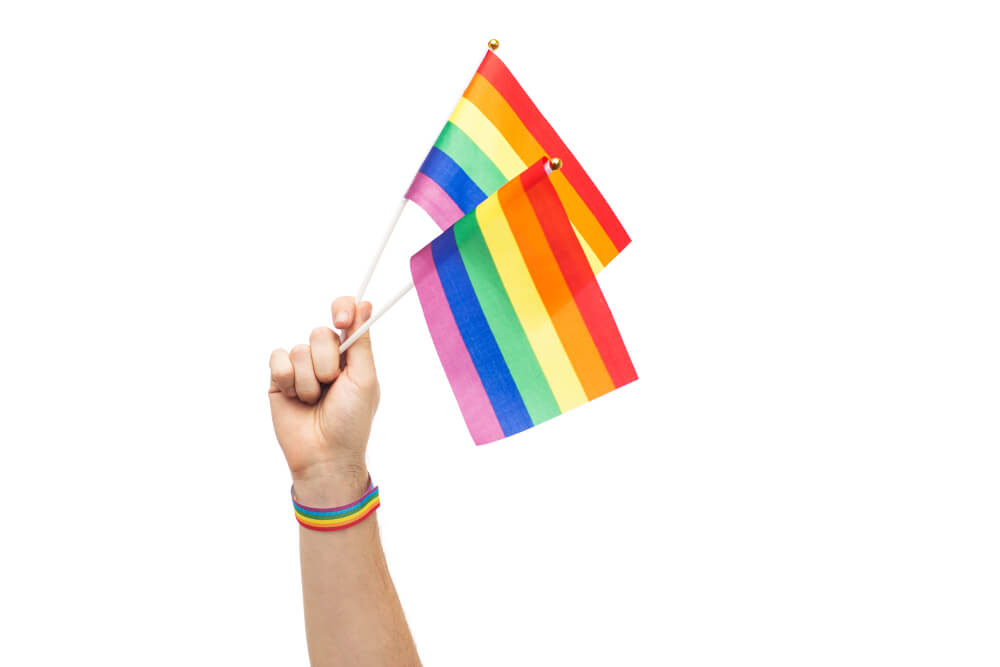
Most people (sadly, not everyone) know that it’s important for children to learn about LGBTIQ+ issues and identities. We can always learn more, though, and improve what we pass on to children. These expert opinion pieces are a great place to start.
- This article about inclusive education suggests practical, time-efficient ideas for fostering LGBT+ inclusion in your classroom and creating a happier environment for all students.
- Make sure your library shelves are as inclusive as you’d like your school to be, with these empowering and empathetic LGBT reads, plus find out from author Simon James Green why books containing portrayals of LGBTQ+ characters deserve a place in every school.
- Use Pride Month in June to educate pupils about LGBTQ+ issues. These Pride Month activities, ideas and other resources will help you do just that.
- Dr Anna Llewellyn explains that if we want true LGBT+ inclusivity in schools, we need to address our heteronormative society.
- Find out about School Diversity Week which celebrates LGBT+ equality in education.







